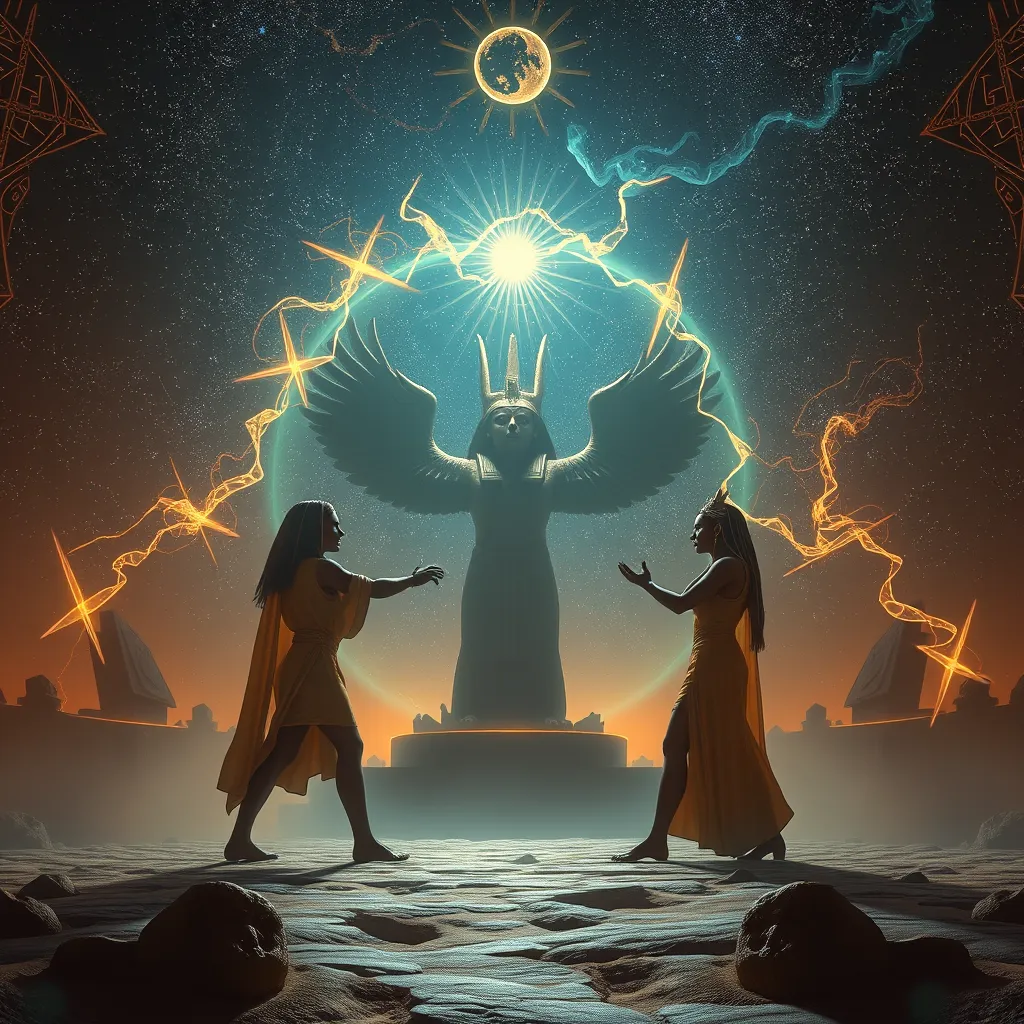The Duat: Exploring the Cosmic Dance of Life and Death
I. Introduction to the Duat
The Duat, often referred to as the Egyptian underworld, holds a significant place in ancient Egyptian mythology. It is a realm that embodies the intricate relationship between life and death, a concept deeply rooted in the beliefs of the ancient Egyptians. The Duat is not merely a place of darkness; it represents the journey of the soul, filled with trials and transformations that echo the cycles of life.
In Egyptian belief, life and death are seen as two sides of the same coin, interconnected and interdependent. The Duat serves as the bridge between the mortal world and the afterlife, emphasizing the duality that defines human existence. This article delves into the various aspects of the Duat, exploring its structure, the journey through it, its deities, and its lasting impact on spirituality and culture.
II. The Structure of the Duat
The Duat is a complex and multifaceted realm that is often depicted as a vast landscape filled with various regions and features. Understanding its structure is crucial to grasping the full significance of this mythical space.
- Regions of the Duat: The Duat is divided into several realms, each representing different stages of the afterlife. These include the Field of Reeds, a paradise for the righteous, and the more ominous areas where souls face judgment.
- Key Features: The Duat encompasses various landscapes, including:
- Rivers: Often depicted as flowing with water from the Nile, these rivers symbolize the passage to the afterlife.
- Fields: The Fields of Iaru, or the Field of Reeds, is a lush area where the blessed souls reside in eternal peace.
- The Underworld: A darker realm where the souls of the unworthy face punishment, reinforcing the moral duality present in Egyptian beliefs.
III. The Journey Through the Duat
The journey through the Duat is a central theme in Egyptian mythology, embodying the trials that souls must face after death. Each deceased individual is believed to navigate this complex realm, encountering various challenges along the way.
- Role of the Deceased: Upon death, a soul must traverse the Duat, facing obstacles that test their worthiness. This journey is often depicted in tomb art, showing the deceased overcoming barriers with the help of protective spells and deities.
- Symbolism of the Journey: The journey symbolizes the soul’s transformation and the continuous cycle of life and death. Each challenge represents moral and spiritual tests, reflecting the individual’s life on earth.
IV. Deities of the Duat
The Duat is populated by numerous gods and goddesses who play vital roles in guiding souls and maintaining cosmic order. These deities are integral to the Egyptian understanding of the afterlife.
- Major Deities:
- Osiris: The god of the afterlife, Osiris oversees the judgment of souls and the resurrection process.
- Isis: The goddess of magic and motherhood, Isis aids the deceased in their journey, providing protection and guidance.
- Anubis: The jackal-headed god associated with mummification and the protection of graves, Anubis guides souls through the Duat.
- Roles of the Deities: Each deity serves a unique purpose, from judging the deceased to providing support during their journey. Together, they maintain the balance between life and death, ensuring the cosmic order is upheld.
V. The Weighing of the Heart Ceremony
One of the most significant events in the journey through the Duat is the Weighing of the Heart ceremony. This ritual plays a pivotal role in determining the fate of the deceased.
- Explanation of the Ceremony: In this ceremony, the heart of the deceased is weighed against the feather of Ma’at, the goddess of truth and justice. This act represents the moral and ethical weight of the individual’s life choices.
- Significance of the Outcome:
- If the heart is lighter than the feather, the soul is deemed worthy and is granted passage to the Field of Reeds.
- If heavier, the soul is devoured by Ammit, a fearsome creature, resulting in the finality of death and loss of eternal life.
VI. The Duat in Egyptian Art and Literature
The Duat has been a rich source of inspiration for ancient Egyptian art and literature, with numerous depictions found in tombs and sacred texts.
- Artistic Representations: Tomb walls often feature intricate paintings and carvings illustrating the Duat, depicting scenes of the deceased’s journey, the Weighing of the Heart, and encounters with various deities.
- Literary References: Texts such as the “Book of the Dead” contain spells and guidelines for navigating the Duat, emphasizing its significance in the afterlife and providing insights into the beliefs about death and rebirth.
VII. The Duat’s Influence on Modern Spirituality
In contemporary society, the Duat continues to resonate, influencing modern beliefs about life, death, and the afterlife.
- Relevance in Contemporary Beliefs: The concept of the Duat has found its way into various spiritual practices, representing a journey of the soul that many still connect with today.
- Comparisons with Other Cultures: The idea of an afterlife journey is not unique to Egyptian mythology. Many cultures have similar concepts, such as the Greek Hades or the Norse Hel, showcasing a universal human fascination with what lies beyond death.
VIII. Conclusion: The Legacy of the Duat
The Duat remains a powerful symbol of the human experience, reflecting our deepest fears and hopes regarding life and death. Its intricate structure, rich mythology, and profound symbolism continue to captivate scholars and spiritual seekers alike.
As we explore the cosmic dance of life and death, the legacy of the Duat offers invaluable insights into the ancient Egyptian worldview, reminding us of the enduring nature of our quest for understanding and meaning in the face of mortality.





